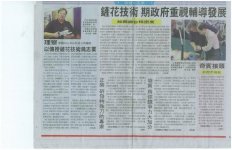ironsmith89
Aluminum
- Joined
- Aug 29, 2014
- Location
- lennox, sd, USA
I wanted to pick the brains of some of the experts out there regarding the equation for airy point spacing. I have always used Length X .577, however in reading Moore's Foundations of Mech. Acc. I noticed they address two different constants for obtaining their spacing. On pages 27 & 28 the constant .544L is used on their straddle gauge, while they don't call them airy points here, it's basically what their description eludes to. Turning to page 123 they describe "Airy Points" and the .577L equation I'm familiar with.
To throw another monkey wrench in the system, most of the machines I rebuild at work have their tables sent out for grinding. When they come back I give them thorough inspection on airy points with levels, mic for taper etc. etc. In doing this inspection I can usually see the marks left on the flat ways under the table where they rest it to grind the top, and I have seen two shops who use .500 X length as their spacing. Most of these tables are over 8' long, which really changes the spacing depending on which equation you use. For example one common length is 107"
107 x .577=61.739
107 x .544=58.208
107 x .500=53.500
Am I splitting hairs here? I feel this Is too much variation to ignore. I myself as I mentioned use .577, however two different rebuilding shops I can confirm use .500. When I inspect their work resting at .577 I do get an error in overall straightness of approximately. 001-.002 usually with the ends high which makes sense.
I just wanted to gather a few expert opinions on the matter.
Thanks
Chris German
To throw another monkey wrench in the system, most of the machines I rebuild at work have their tables sent out for grinding. When they come back I give them thorough inspection on airy points with levels, mic for taper etc. etc. In doing this inspection I can usually see the marks left on the flat ways under the table where they rest it to grind the top, and I have seen two shops who use .500 X length as their spacing. Most of these tables are over 8' long, which really changes the spacing depending on which equation you use. For example one common length is 107"
107 x .577=61.739
107 x .544=58.208
107 x .500=53.500
Am I splitting hairs here? I feel this Is too much variation to ignore. I myself as I mentioned use .577, however two different rebuilding shops I can confirm use .500. When I inspect their work resting at .577 I do get an error in overall straightness of approximately. 001-.002 usually with the ends high which makes sense.
I just wanted to gather a few expert opinions on the matter.
Thanks
Chris German






